It’s a blast, blast, blast.
November 15, 2023 – Day 47
French Creek State Park is located next the Hopewell Furnace National Historic Site. Paul’s brother has visited this in the past and spoke highly of it. After a lazy morning we headed over to visit it and stamp our National Parks Passport book.
Hopewell Furnace showcases an early American landscape of industrial operations from 1771-1883, Hopewell and other “iron plantations” laid the foundation for the transformation of the United States into an industrial giant for the time. The park’s 848 acres and historic structures illustrate the business, technology and lifestyle of our growing nation.
There were two furnaces there, the newer, anthracite furnace, which was decommissioned after 4 years since transporting the anthracite coal made the steel more expensive, and the “older” charcoal blast furnace.
We stopped in at the Visitor’s Center first where we got multiple stamps and then checked out the exhibits. All of the display cases were exceptionally dark. I know they have to preserve the artifacts and light can be damaging, but the texts were often hard to read because of the dimness plus the glare from the room lights. But check out these shoes!
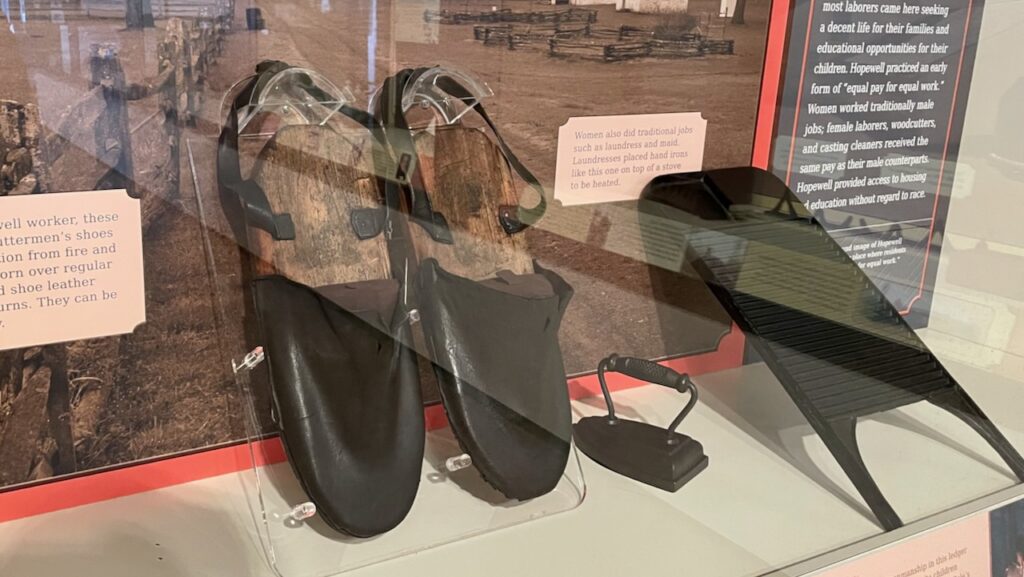
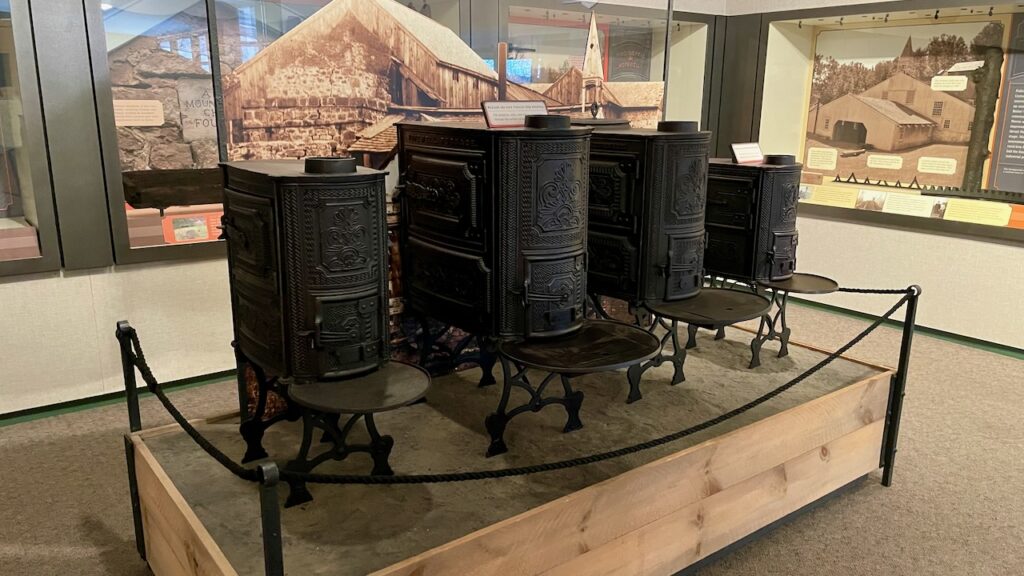
Here we see the remains of the newer, anthracite furnace.
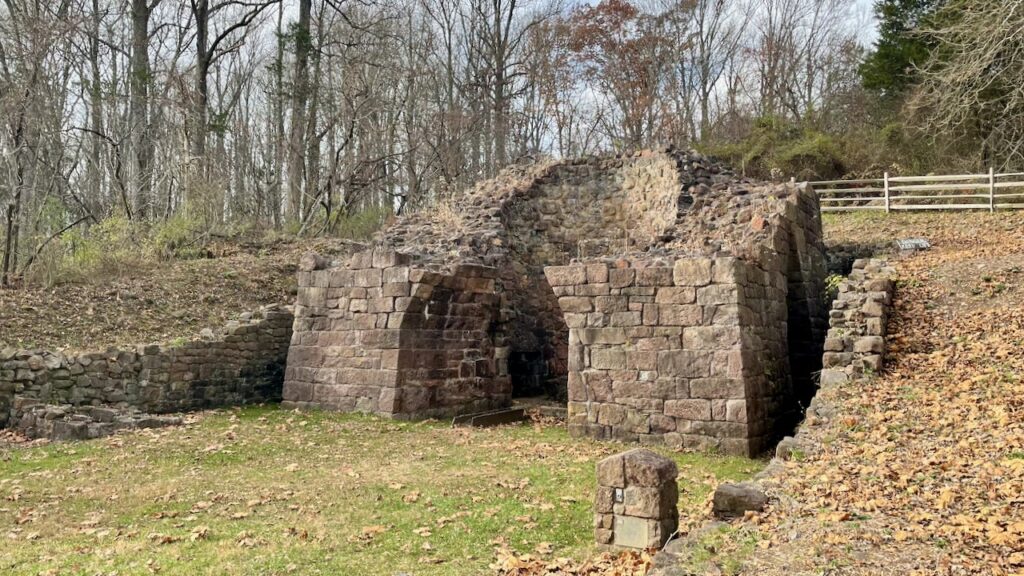
In 1853 the Hopewell partners built a hot blast anthracite furnace here. This new furnace did not burn charcoal but used anthracite coal to smelt iron – an attempt to reduce fuel costs and increase iron production.
Hopewell’s anthracite furnace operated for less than four years. By 1857, furnace machinery had been removed and was installed on a new furnace on the Schulkill Canal. This suggests the cost of hauling coal made the furnace operation uneconomical.
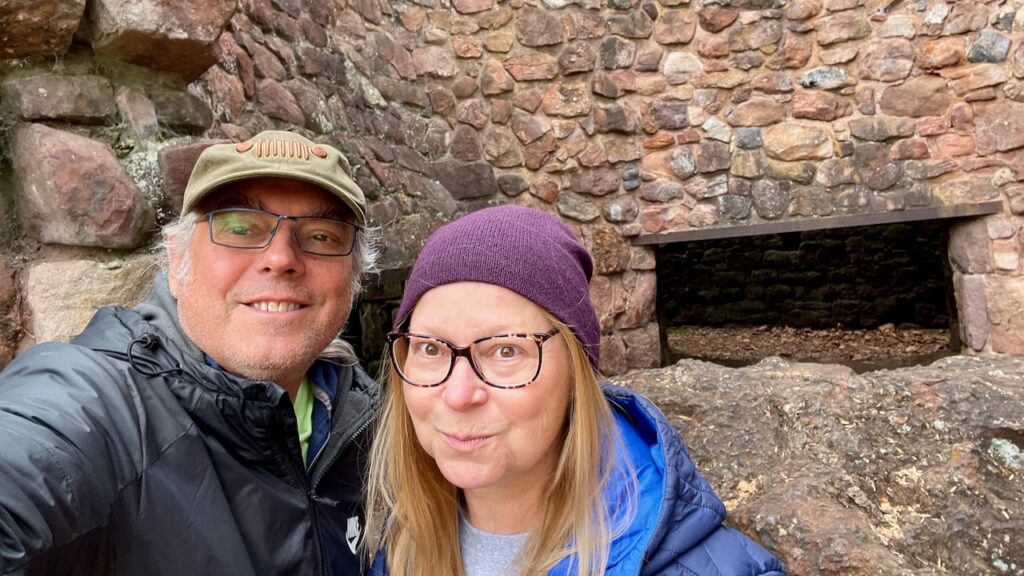
Making charcoal requires constant attention to the charcoal pits, or hearths, which averaged in size from 30-40 feet in diameter. For this purpose a collier would live in a makeshift hut with one or two helpers who would tend up to 8 or 9 pits at one time. There can be no break in the vigilant watching of the pits from the moment they are lit until the moment the teamster drives away with the final load of charcoal.
Charcoal Making
Here’s one of those makeshift huts. (susan here: Looks cozy, huh?)
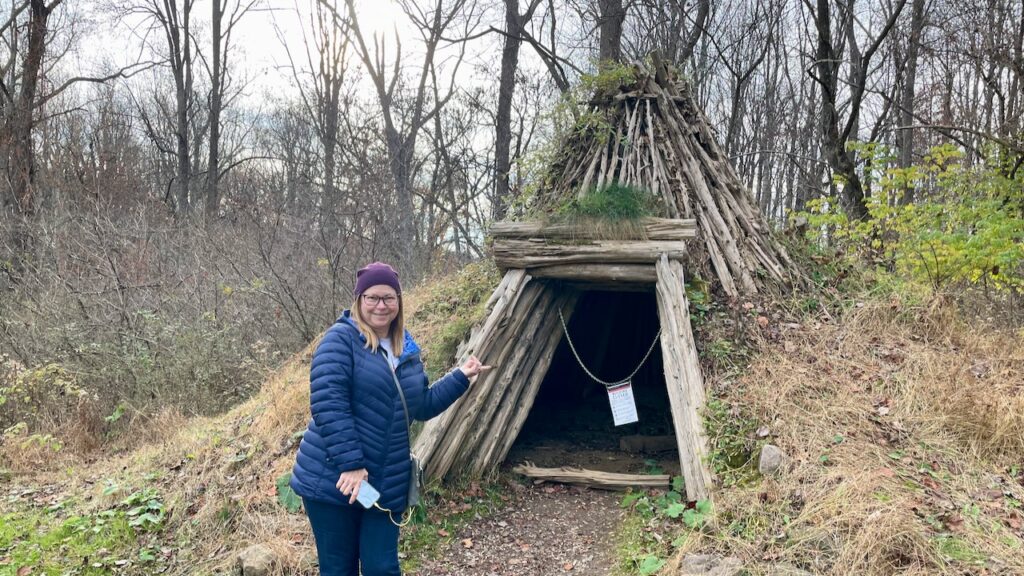
There was a company store where the employees could purchase everything they needed. Some lived in housing near the furnace.
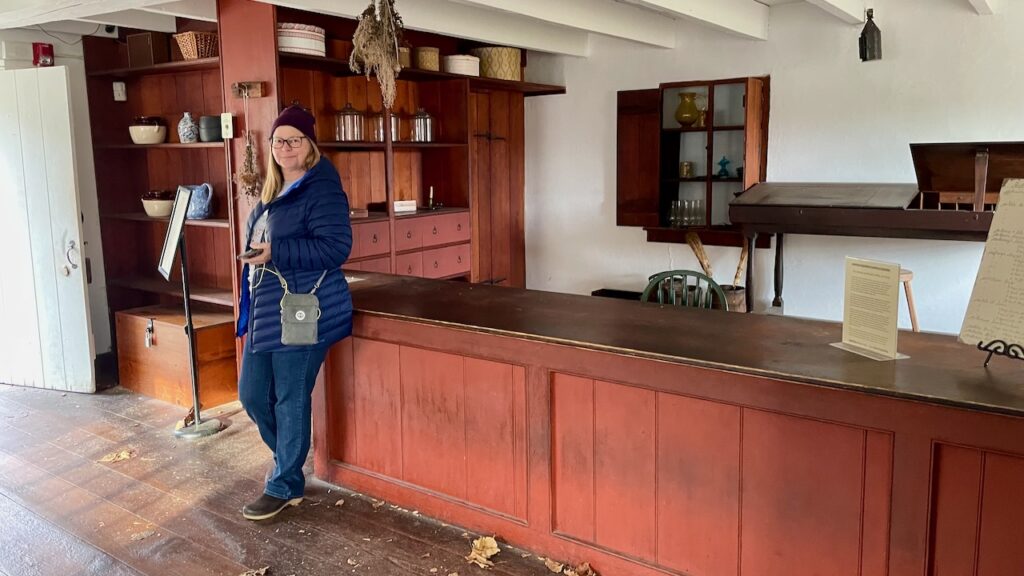
Iron, limestone, and charcoal were combined in a precise mixture to produce the steel in the blast furnace. This is a charcoal cooling room.
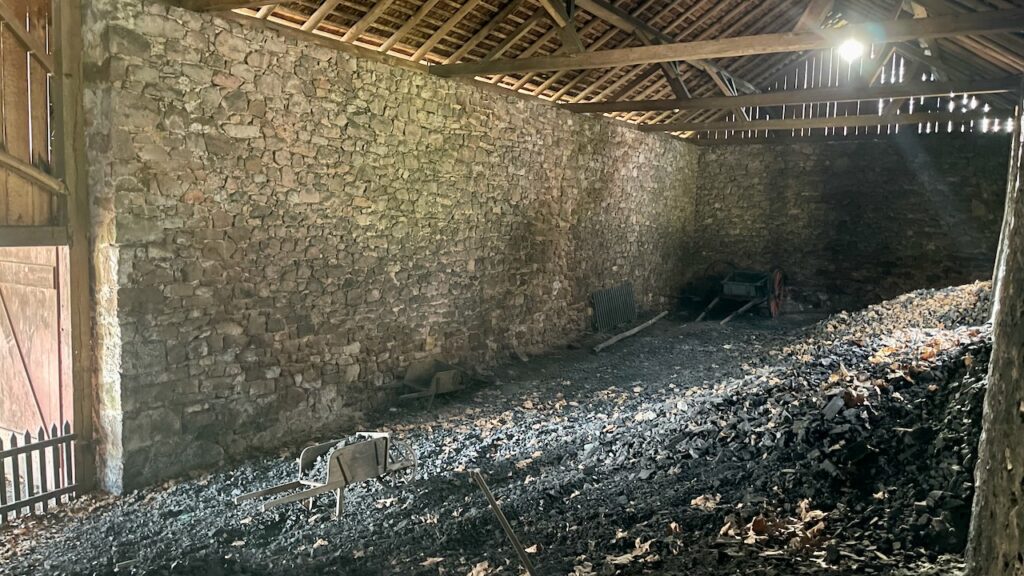
The charcoal blast furnace was huge.
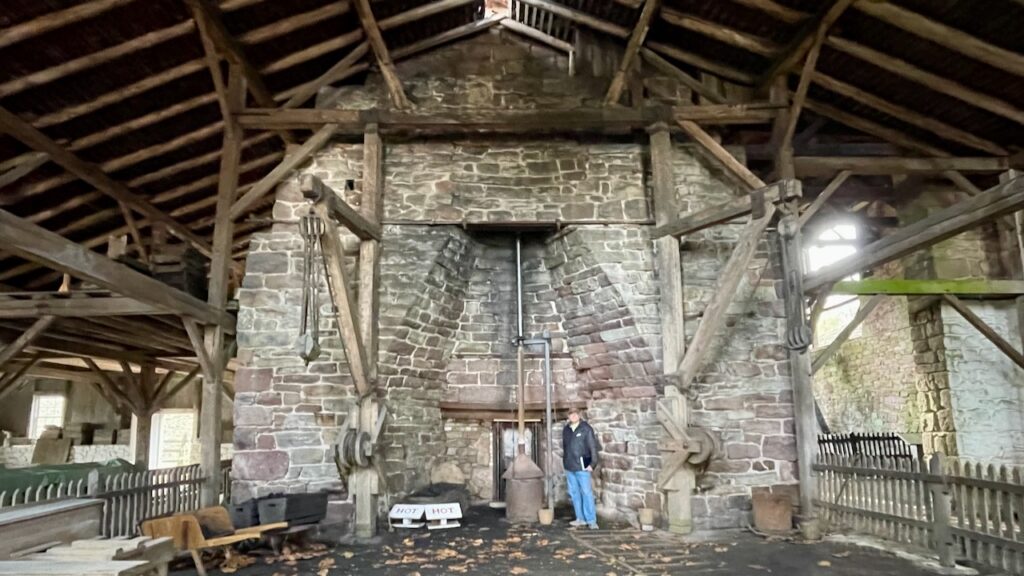
Above you see Paul standing next to the downstairs part, upstairs there was a much smaller room where the iron, charcoal and limestone were put into the furnace. Off to the right is the water wheel which powered the circular air bellows.
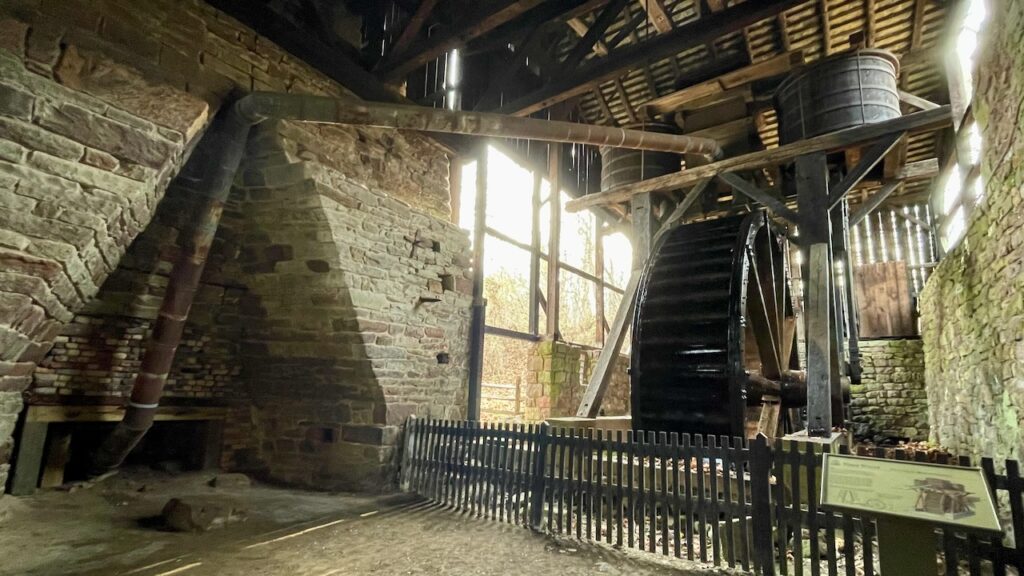
You can see the two, cylindrical, air bellows at the top, one on each side of the water wheel, which is still operational. You can also see the air tube which fed into the furnace.
There was a large “flask casting” room on the other side where artisans would take the molten steel and pour it into moulds, like stove parts. Toward the end the furnace was only producing pig iron. The newer anthracite furnaces were out competing them.
Outside this room Paul found a small wood shop.
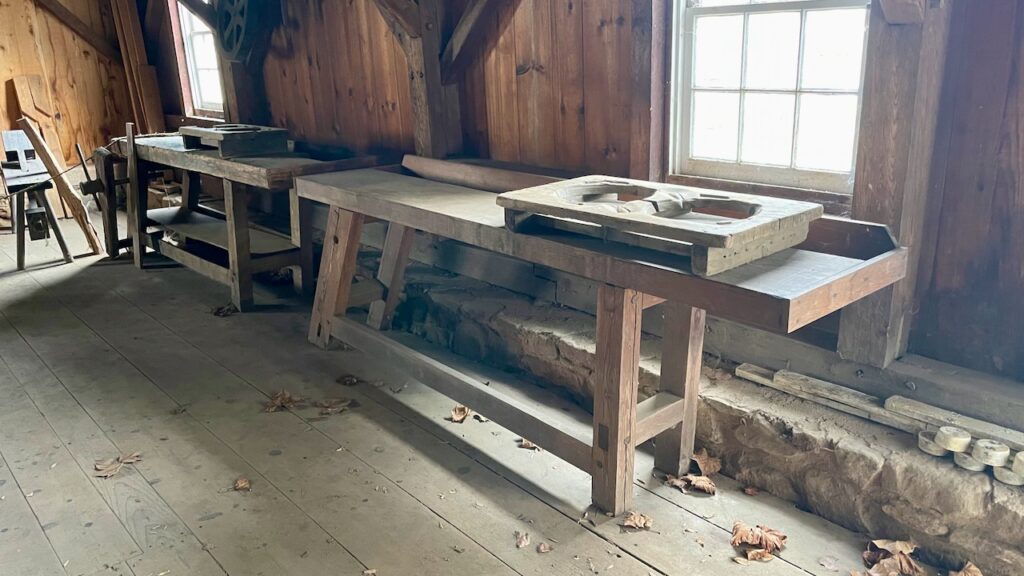
We can see two workbenches as well as a shave horse on the far left side. There wasn’t any signage at all in this room.
The external blacksmith’s shop was frightening to see. We couldn’t imagine how many ways one could get severely injured here. Notice the large bellows off to the left.
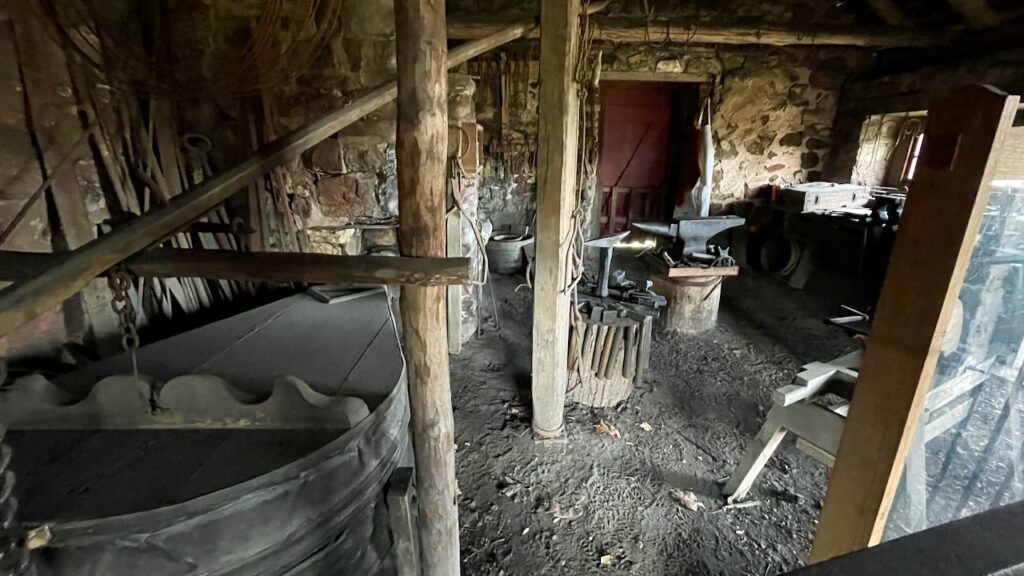
Just down the road was some worker housing.
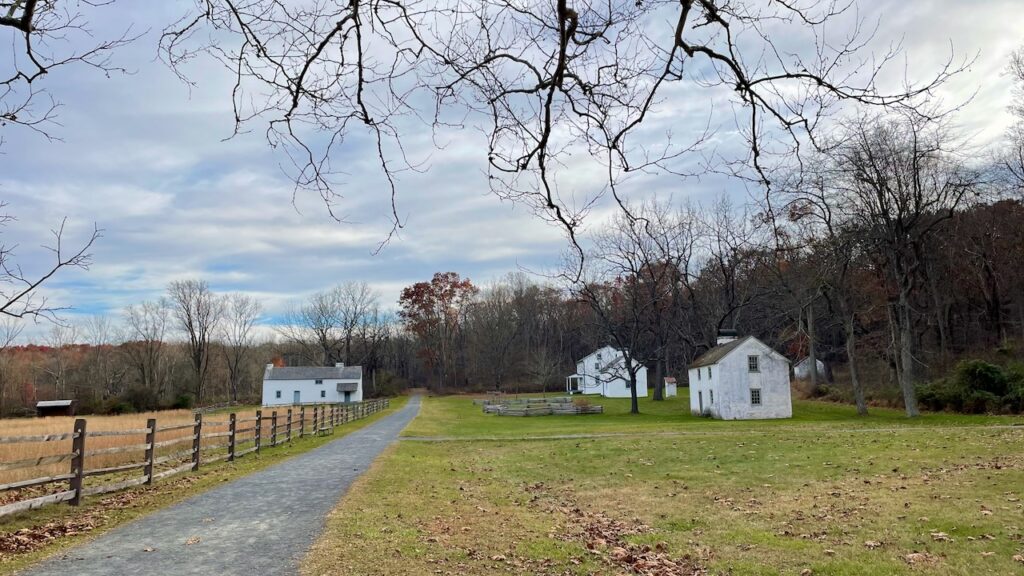
There was also the foundation of the school, but the building is long gone.
They had 2 cows.
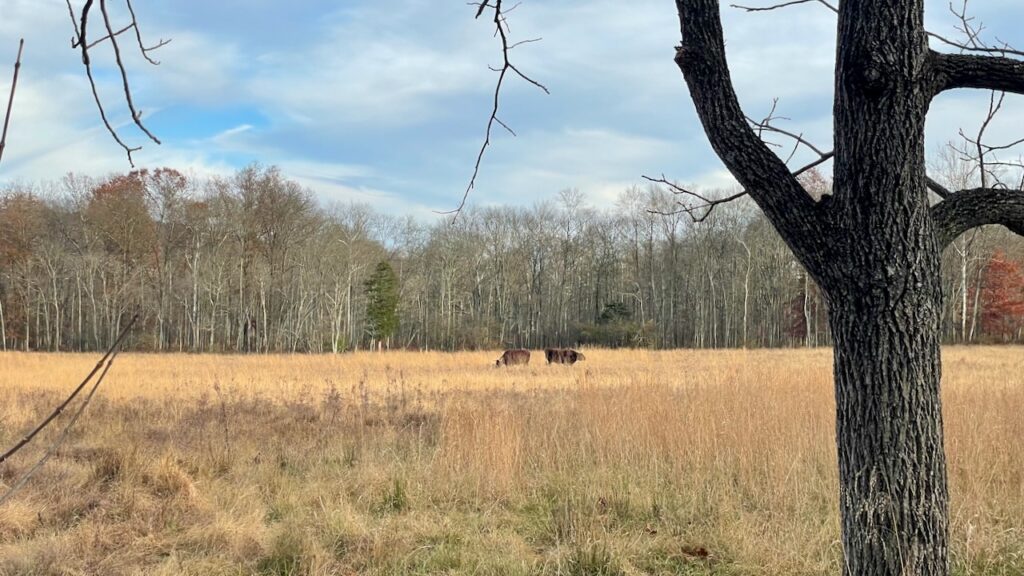
13 sheep, including the black sheep of the family.
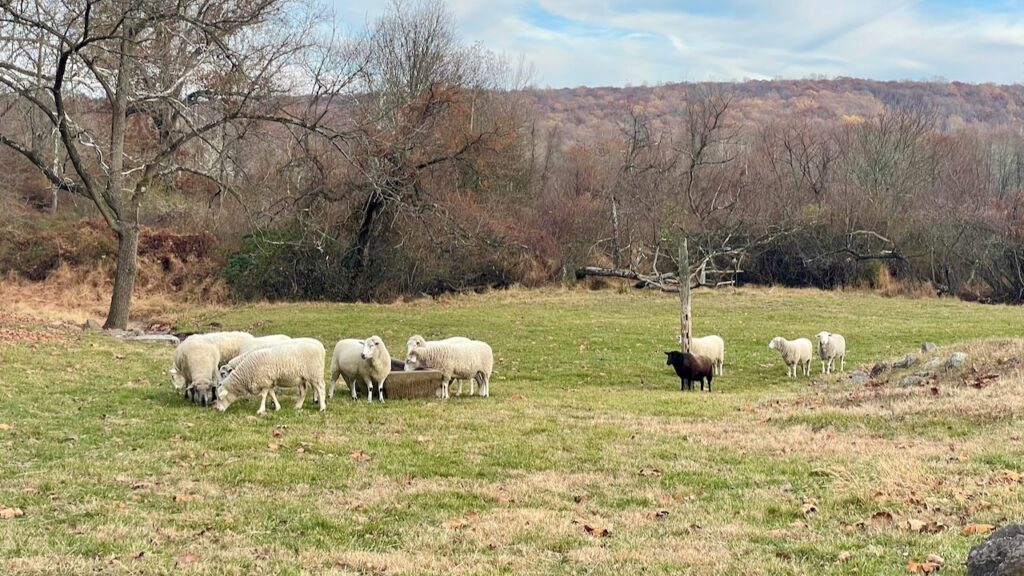
This included one very friendly one!
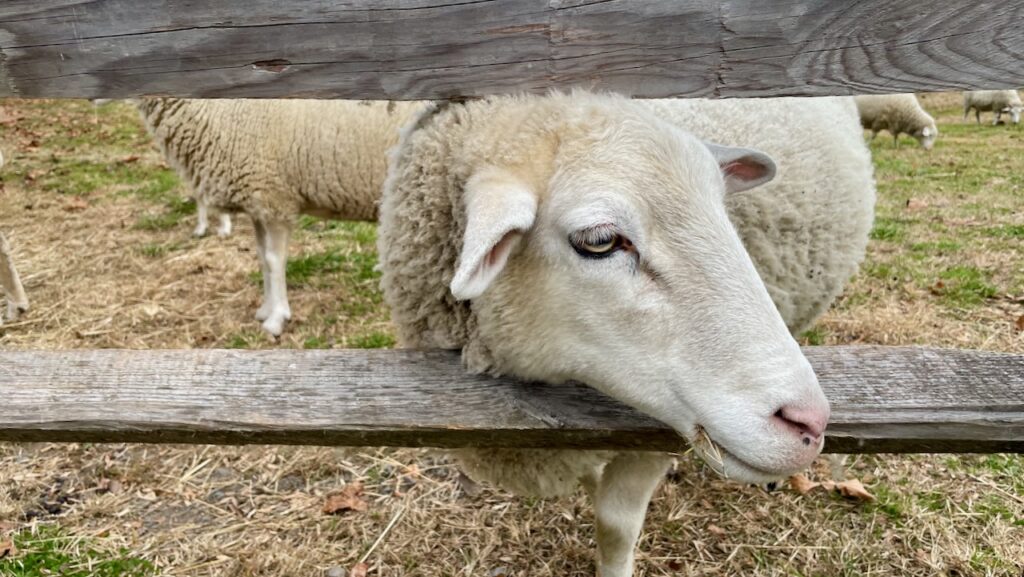
Walking back we could see the store on the left, the owner’s house, and the barn.
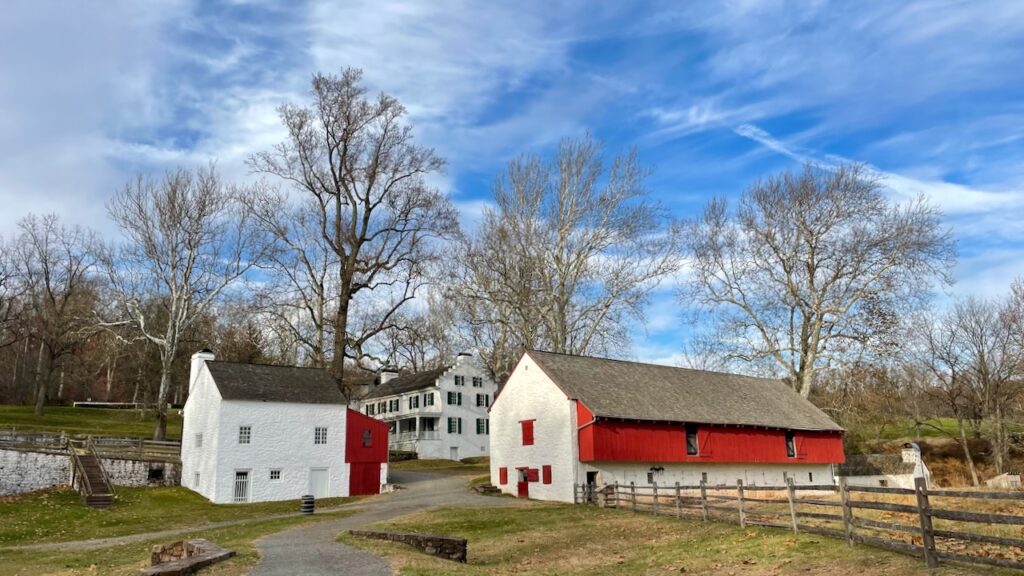
As expected the owners lived a fine life, compare this to the hut the collier lived in!
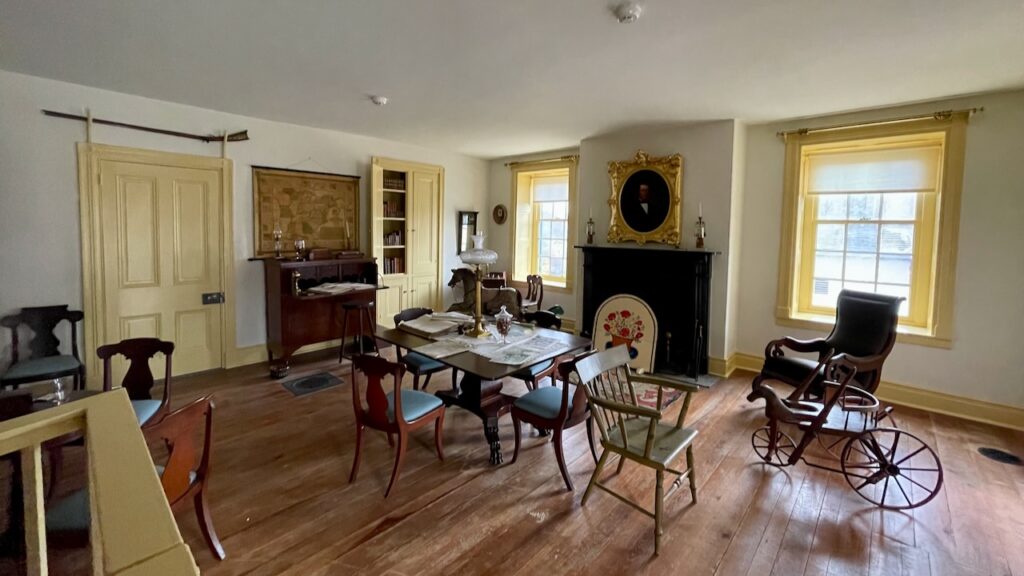
We really enjoyed our visit to Hopewell and since it is near the main route to get back home, we’ll likely visit it again. They do have demonstrations of flask casting during the summer, and they do aluminum casting several times a year.
Daily: 0
Return Total: 2,727
Return Overall Miles/Day: 341
Return Driving Miles/Day: 182
Overall Total: 5,863
Total Driving Miles/Day: 345
Life Birds: 0 – Ring Neck Pheasant. This was a nice grab, just along side the road coming in. It is marked as 0, not 1, since eBird calls it an “escapee” since Pheasants are an asian bird but have been kept in captivity for centuries. They have also naturalized in some areas.